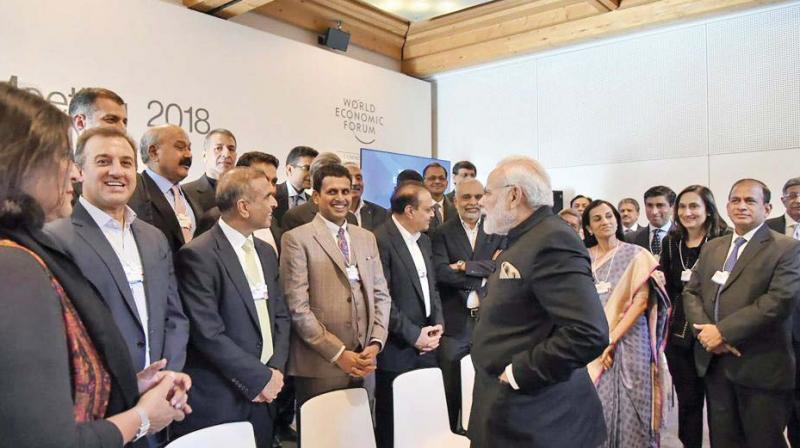Time Narendra Modi took the bullet

The World Economic Forum’s Inclusive Development Index Survey 2018, released a day before Prime Minister Narendra Modi reached Davos, would have possibly caused some embarrassment. There was rejoicing at the Moody’s upgrade a few months back.
A few weeks back the ranking for “ease of doing business” in India jumped 30 places to land India within the top 100 countries. If we dig a bit deeper, we would realise that the survey covered a few thousands in Metro cities of Mumbai and Delhi.
The question is whether they represent the experience of millions of businessmen across the country and the reality at the ground level? It’s a different matter that the Chief Economist of the World Bank, Paul Romer resigned due to controversies relating to Chile rankings, which indicates the possible rot in the process.
Similarly, the recent rankings of inclusive development index of WEF need not mean that India has suddenly fallen off the cliff.
A quick glance of the top nine economies in the said report, other than Australia, which includes Norway, Iceland, Luxembourg, Switzerland, Denmark, Sweden, Netherlands, Ireland and Austria shows that the combined area is about 1/3rd with a population which is 1/20th of India. So are we comparing apples with oranges?
A recent report in The Economist aptly described the diversity of India. The top one per cent of the Indian adults comprising eight million population earns about US $20,000 which is equivalent to Hong Kong. The next nine per cent is like Europe and next 40 per cent mirrors poor South Asian neighbours Pakistan, Bangladesh and the others. The remaining, the report says, is on par with most of the destitute bits of Africa. I beg to differ with the view that half of Indian population is destitute.
The government’s agenda has to be to clear the impediments for the top 10 per cent of the adult population so that their capital and efforts are utilised efficiently to provide opportunities for the next 40 per cent of the population.
Another important agenda would be to shift the bottom of the pyramid from depending on government dole outs to self-sufficiency, especially the youth, which will help in reducing inequalities in the longer run since they form 28 per cent of the population. All this is easier said than done since a structural shift for a country sustaining 17 per cent of the world population, it will take a few decades, if not a generation to witness a perceptible change.
Prime Minister Narendra Modi with a clear intent, supported by the mandate, could take bold steps to shake the status quo. But the effect of cleansing of the system and streamlining can be done only if the leader is willing to bite the bullet. Coming back to the inclusive development index of WEF, it has acknowledged that GDP per capita for India has posted strong growth rates for the last 5 years, while employment growth rate has slowed.
We could be the fourth largest economy in the 2020s overtaking Germany. The comprehensive eight-point development plan put forth by the Modi government should provide impetus to the growth mantra.
India has the largest young population in the world, thus we have one of the best demographics which will spur our growth beyond the 2030s when most of today’s developed world would have shown signs of a slowdown. The biggest challenge would be to employ this young population efficiently and gainfully since any failure on this count could boomerang.
(The author is an equity market analyst)

